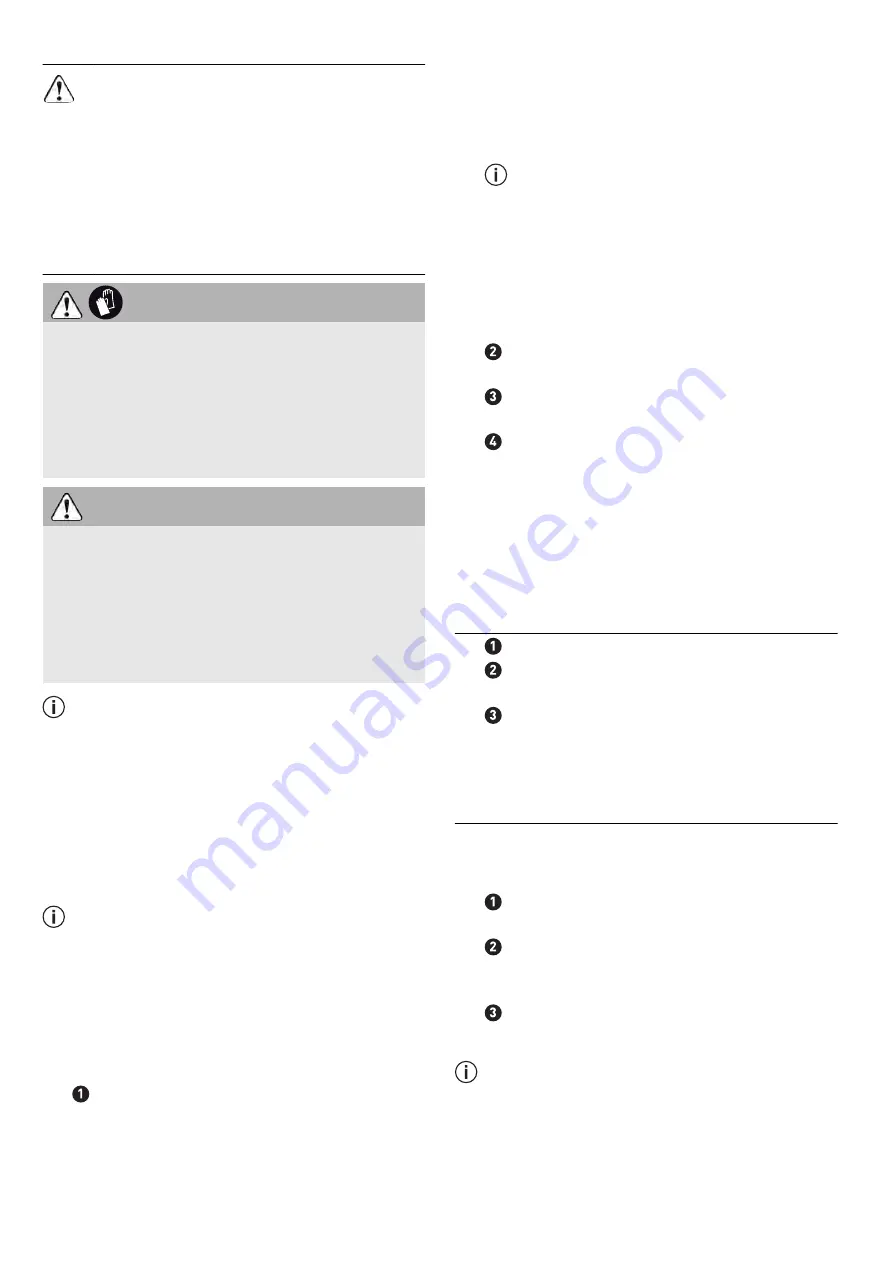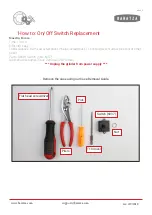
8.1
Fitting the auxiliary handle [1-6]
Always use the auxiliary handle to ensure
a safe working posture that prevents you
from tiring.
The special "VIBRASTOP" design of the auxiliary
handle helps to reduce vibrations.
► Screw in the auxiliary handle [1-6] on the
side of the thread [1-3] according to the
working method.
8.2
Fitting the sanding tool [4]
CAUTION
Risk of injury from hot and sharp tool
► Do not use any vibrating, blunt or defective
sanding tools.
► Do not use sanding tools that have been
exposed to extreme humidity, moisture or
high temperatures prior to installation.
► Wear protective gloves.
WARNING
Risk of injury from incorrectly fitted sanding
tool
► Only fold up the lift-up handle [4-3] for the
quick-action clamping nut when you are
replacing the sanding tool.
► Ensure that the flange [4-4] is fitted on the
spindle before installing the sanding tool.
Only tighten or loosen the clamping nut by
hand. Never use tools to loosen or tighten
the lift-up handle.
If the nut can no longer be loosened by
hand, it should only be loosened with a
face wrench [5-1].
If the lift-up handle is loose or damaged,
the clamping nut must no longer be used
under any circumstances.
Use the guard provided for the application
in each case.
► Remove the battery pack from the power
tool.
► Open the lift-up handle [4-3] for the quick-
action clamping nut.
► Unscrew the quick-action clamping nut
[4-2] by hand.
►
Place the sanding tool on the spindle
and flange [4-4].
Ensure that the centring ridge of the flange
fits exactly into the opening in the disc and
that the form-fit connection between the
power tool/spindle and flange matches.
Ensure that the diameter of the power tool
spindle matches the hole in the sanding
tool.
Offset sanding tools must be fitted so
that their sanding area does not pro
trude beyond the edge of the guard.
Adhere to the stipulated rotational direction
of the sanding tool (arrow on the sanding
tool = arrow on the tool housing [4-1]).
► Place the quick-action clamping nut on the
sanding tool and spindle.
►
Press the spindle lock [4-5] on the re
verse of the tool.
►
Tighten the quick-action clamping nut by
hand.
►
Close the lift-up handle for the quick-ac
tion clamping nut.
► Check that the sanding tool is securely at
tached and fitted to the power tool.
► Let new sanding tools run for around one
minute with no load as a test.
Removal is performed in reverse sequence to
assembly [5a].
8.3
Fitting the wire brushes [6]
►
Remove the handle [6-1].
►
Fit the handle with hand protection
[6-2].
►
Fit the wire brushes [6-3] securely in the
holding thread [6-4].
Observe the information provided for the
wire brushes.
8.4
Positioning the guard/cutting guard [7]
The guard is preassembled. You can simply
turn the guard to adapt its position to the re
quirements of the task.
►
Press and hold the locking lever on the
guard.
►
Adjust the guard on the power tool so
that sparks and particles are deflected away
from the body.
►
Release the locking lever and continue
to turn the guard until it locks in place.
The cutting guard, available as an acces
sory, can be positioned in the same way.
English
24



































